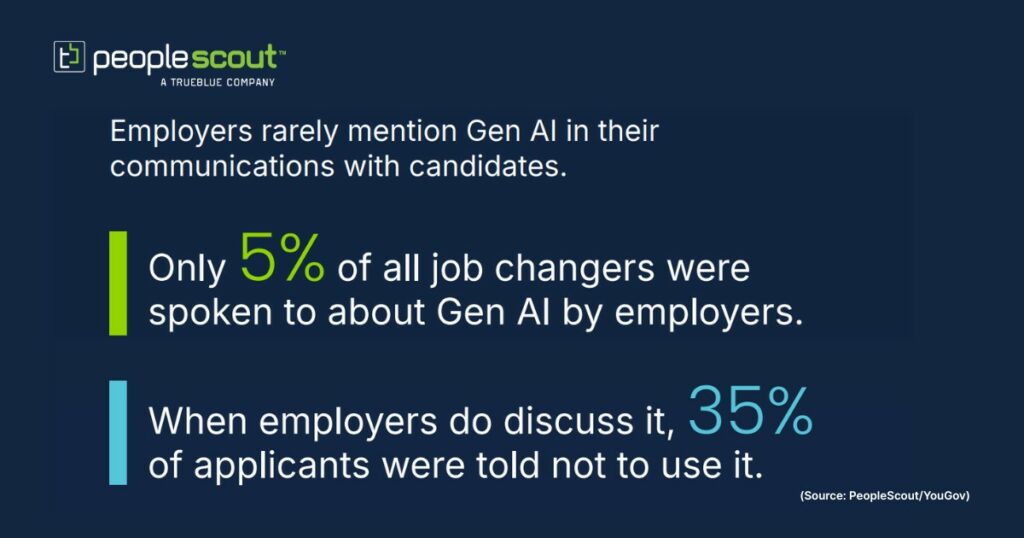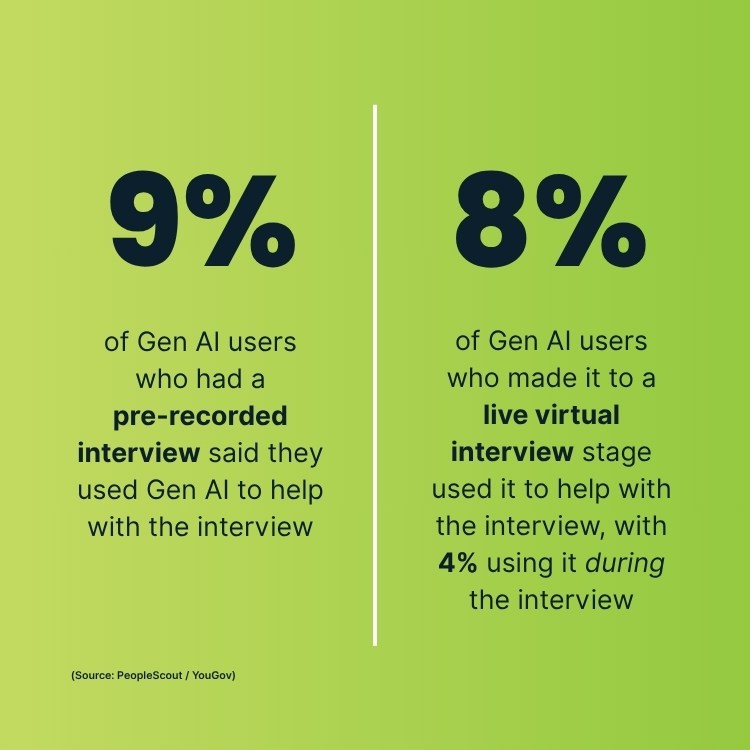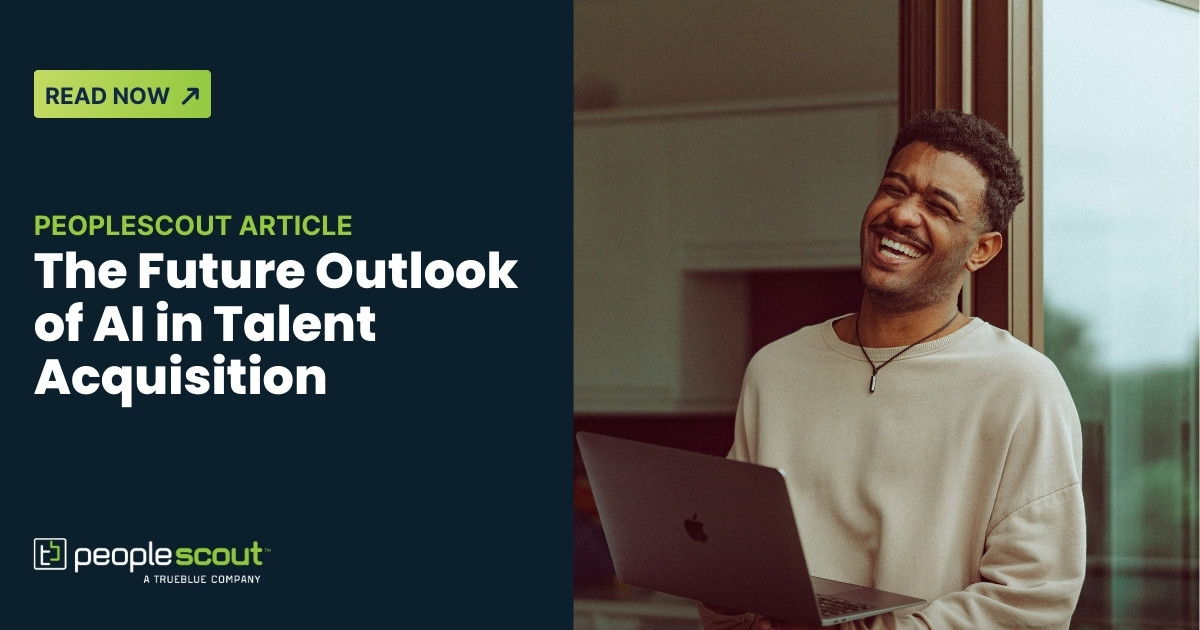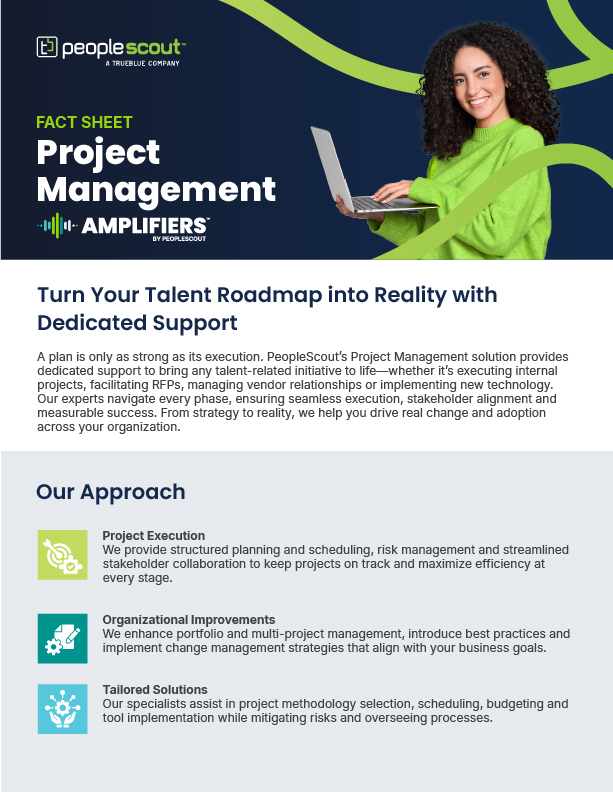Generative AI (Gen AI) is disrupting the job-seeking landscape, offering powerful tools that transform CVs, résumés, cover letters and interview preparation. Despite this technological shift, our research, The AI-Enabled Applicant: How Candidates Are Really Using Gen AI in Recruitment, indicates a surprising adoption gap—only one in five UK job seekers currently leverage these AI capabilities. Nevertheless, employers remain concerned about candidates potentially using AI to embellish or misrepresent their qualifications and experience.
This article marks the third installment in our series examining the implications of our research findings on Gen AI’s role in recruitment. As these technologies continue to reshape hiring practices, organisations must evolve their approaches to preserve assessment integrity while efficiently identifying exceptional talent. Drawing from our research, we’ve developed several actionable strategies for navigating this new reality:
Set Clear Expectations on AI Usage
Be transparent about your stance on Gen AI usage throughout the application process. Rather than implementing blanket bans that may be impossible to enforce, consider:
- Providing specific guidelines on acceptable AI use (e.g., “Gen AI may be used to help with formatting and improving your CV but not in a way that falsely represents your skills or experience”)
- Explaining the rationale behind restrictions to encourage candidate adherence
- Including explicit statements in job descriptions and application platforms about AI usage policies and potential consequences for use of Gen AI to create inauthentic applications or assessments
Clear communication and transparency about how you expect candidates to use (or not use) Gen AI not only helps encourage appropriate candidate application approaches but also demonstrates organisational integrity in an increasingly AI-influenced world.

Resist Abandoning Proven Methods
Despite vendors claiming to offer “ChatGPT-proof” and “bias free” online assessments, our assessment psychology experts say caution is warranted:
- There is currently limited evidence supporting the effectiveness of many new “AI-proof” assessment methods.
- Hastily implemented solutions may introduce new biases or inefficiencies—doing more harm than good.
- Completely abandoning traditional methods could disrupt established recruitment pipelines.
Instead, maintain a balanced approach. Focus on strengthening existing processes with strategic modifications that address specific vulnerabilities to Gen AI manipulation. Regularly evaluate and update your processes to respond to emerging AI capabilities.
Make Application Questions Personal
Generic questions are particularly vulnerable to AI-generated answers. Design questions that elicit unique, authentic responses, like:
- Asking candidates to draw from own unique experience
- Requesting concrete examples of how they’ve demonstrated particular skills or values
- Incorporating questions about personal motivation and alignment with organisational culture that require genuine self-reflection
Questions that require candidates to draw from their unique backgrounds and perspectives are inherently more difficult for Gen AI to generate strong and credible answers.
Develop Unique Questions
Create bespoke evaluation components. Standard questions are easily accessible online and therefore vulnerable to Gen AI assistance. Instead:
- Develop application questions specific to your organisation’s values, challenges and opportunities
- Design scenario-based questions that relate directly to the unique aspects of the role
- Request detailed responses that demonstrate depth of understanding rather than surface-level knowledge
Questions that are specific to your organisation and the role push candidates to think beyond any scripted answers. Not only does this reduce the effectiveness of Gen AI, but it’s also better at uncovering candidates’ genuine interest and cultural fit.
Implement Verification Strategies
Consider validating CV and application content by:
- Referencing and discussing application content during face-to-face interviews
- Asking candidates to elaborate on or defend specific points from their CV or written applications
- Implementing a verification process for all candidates or for a sample
Informing candidates in advance that verification will occur can itself serve as a deterrent to Gen AI misuse.
Prioritise In-Person Interviews and Assessments
Maximise the value of human interaction. While resource-intensive, in-person interviews and assessments remain among the most reliable methods for evaluating candidates in the Gen AI era:
- Design high-quality, job-related interview questions with clear evaluation criteria.
- Train interviewers to probe for authenticity and consistent understanding of claimed experiences.
- Incorporate practical demonstrations or simulations that require candidates to apply skills in real-time.
The combination of well-designed questions and simulations, and skilled interviewers and assessors, creates an environment where assistance from Gen AI provides minimal advantage.
Apply Caution with Detection Technologies
Evaluate AI detection tools critically. While numerous AI detection solutions have emerged, their effectiveness remains questionable. Our assessment psychology experts warn:
- We see little to no evidence that they work effectively.
- Implementation can be costly and complex.
- There are potential fairness concerns, particularly for candidates from diverse backgrounds.
If considering detection tools, thoroughly evaluate their accuracy and review potential biases. Ensure there is a robust defence case in place to protect against any legal claim made by someone rejected due to assumed detection of Gen AI use. If the decision is made to use them, consider them as just one element of a comprehensive strategy, in line with new restrictions emerging from the new EU laws around Gen AI use, rather than a standalone solution.
Conclusion
By implementing these practical strategies, organisations can navigate the evolving landscape of AI in recruitment while maintaining the integrity of their selection processes. The goal is not to eliminate Gen AI usage from the recruitment process entirely, but rather to ensure that human capabilities and potential remain at the centre of hiring decisions.
To help organisations make more informed decisions, PeopleScout’s Assessment Design & Delivery team offers a Gen AI Opportunity & Risk Assessment Audit. This comprehensive review of the recruitment process identifies both vulnerabilities and opportunities related to generative AI throughout the candidate journey. Our assessment psychologists give you evidence-based recommendations to help you focus resources on critical vulnerability points, protecting your selection accuracy and diversity outcomes.
For more Gen AI insights, download the full The AI-Enabled Applicant: How Candidates Are Really Using Gen AI in Recruitment report.







